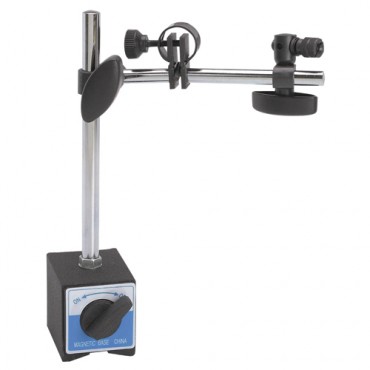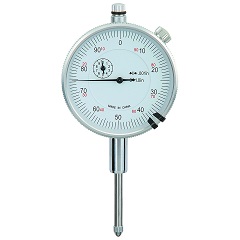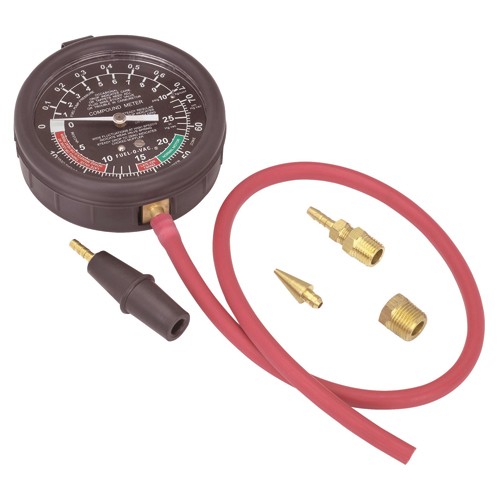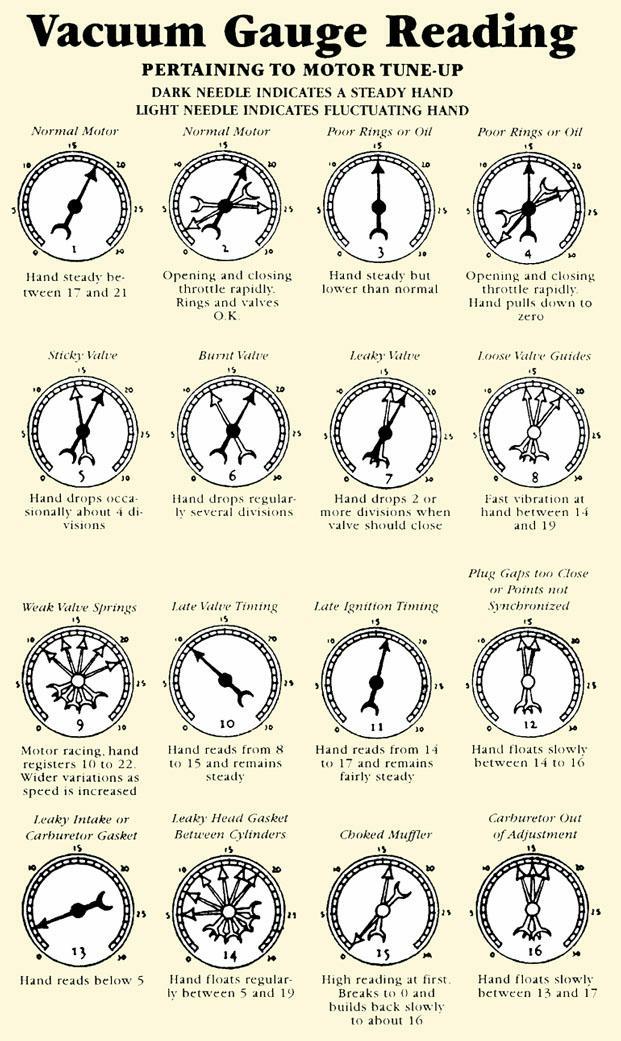Shaun
Member
Grumpy,
Sorry if this is lengthy, I am just trying to be thorough. Most guys seem to ask blanket questions without providing many critical details. Hopefully you can help me out here with my 82’ square body. I have a late 80’s C/K 454 truck block. With the peanut port heads (113cc?) I believe compression is in the high 7’s. I have 048’s on it right now (122cc?). First question is, what do you think my compression is with the 049’s? Or better yet do you know what pistons are in the truck block so I can do my own math?
Camshaft wise, I have no clue what is in it, the guy before me may have cammed it, but my gut instinct is that it is the stocker (somewhere around 193-204 deg's duration @.050 and a lift of .398-.430). Second question, what do you think would be the ideal idle – 5200 rpm or so cam selection? With the ultra-low compression, I have no clue where to go with duration, or even LSA. I prefer as narrow LSA as possible for idle lope- I am currently running a Quadra Jet / mechanical ZZ4 distributor- 14/34/50ish canned with light advance springs, so computer compatibility is not a problem. Carter high volume mechanical fuel pump, Edelbrock Performer 2-O intake, 74’ LT4 exhaust manifolds, true 2.5” duals through Flowmaster 40’s turned out.
I would love to just toss some pistons in it, be in the range of 9:3:1 – 9:5:1, and utilize the million tried and tested combos out there for me to copy and paste, but funds just are not there quite yet to tear the motor apart (unless if you know someone selling budget cast pre balanced Gen IV rotating assemblies (stock external or internal). I just want to get this one running stronger as is and then down the road do the short block up 496 style.
I have ran it for about 15 years. It is decent, like any big block. I always say a sick or aged big block is like a healthy, moderate 350 small block. It seems like it should have stronger torque off the line than it does. It feels hills, and a low RPM big block not towing shouldn’t feel hills in my opinion. It could be because stuff got mismatched.
Initially I had an alright setup (power wise, not strength wise)… I yanked the 350 out and the 454 actually moved pretty good and even chirped first gear hard. Hard enough that I enjoyed it, got addicted, kept doing it, and blew the TH350 (shocker- but I had to . It also had a GM Corporate 10 bolt with 342’s-so a very light drivetrain. I replaced the TH350 with a built T400 I bought from a Buddy whose wealthy father funded his square body 572 crate build that he basically ruined before it even got to be broken in. Good news, trans was done up, billet shafts and all yada yada. Bad news, he had a Coen with a 2300-2600 stall (I misplaced the stats but I can dig them up if you want). I didn’t have the money at the time to get creative with torque converter matching, so I just through it in, along with a NP205 I sourced and had been sitting on (it had a NP208), and also a 14 bolt SF (with 342’s). I have always ran 33x12.5x15 BFG’s on it since day one, or my backup set of 31x10.5’s.
. It also had a GM Corporate 10 bolt with 342’s-so a very light drivetrain. I replaced the TH350 with a built T400 I bought from a Buddy whose wealthy father funded his square body 572 crate build that he basically ruined before it even got to be broken in. Good news, trans was done up, billet shafts and all yada yada. Bad news, he had a Coen with a 2300-2600 stall (I misplaced the stats but I can dig them up if you want). I didn’t have the money at the time to get creative with torque converter matching, so I just through it in, along with a NP205 I sourced and had been sitting on (it had a NP208), and also a 14 bolt SF (with 342’s). I have always ran 33x12.5x15 BFG’s on it since day one, or my backup set of 31x10.5’s.
My conclusion- no kidding I need gear- but it ran a lot harder before the drivetrain changes (it is a big block and I am talking street here, not crawling), which granted adds a lot of weight. But it lost so much of the line torque that I can’t help but wonder if the high stall speed set up for the revving higher compression 572 is killing my off idle torque. Of course I have no clue what my current torque curve even looks like (flat, strong low then falls off quick?).
Further making me think it is the torque converter (and granted the first gear loss of the TH400) is the fact that I put a Dana 60 up front about two years ago and I had no loss in power- and that sucker is a heavy SOB compared to the ½ ton it replaced.
So, the Dana 60 has 456’s (which I wanted). I will either 456/Detroit the 14BSF, or go ahead and just get a 14BFF with the 456’s already there, do it up like my front so I can still run my aluminum 15” slots that I have ran since the mid-nineties. Either way will cost about the same, only I will have the FF (the SF is kind of hard to shim and crush, and there is just not the plethora of cheat sheets out there like the FF with its “fine tracking knob”). I have read that small blocks like the SF up to about a 37” tire. I plan to run a 37-40” tire with my big block that will be done up healthy one day so I better have the FF’s insurance factor.
The only other change will be swapping in a 4l80e. That and a lift will come next tax season. Sorry, I live on a blue collar income, family of five- try to spoil the kids a little, and do things for myself on a tax season basis- I call it adult Christmas. I have several other vehicles/toys, so each one goes through its come and go periods of trying getting my love. This is my only big block, and I just don’t know them blind folded like my OG small blocks and LS’s variants. I have had fun with it over the years, but my other stuff is getting caught up and it is time to refine this one.
So, to summarize my TMI rant, super low compression 454, 049 heads, turbo 400 with 2300 -2600 stall (will be 4l80e by next year), NP205, 342 gears (456 gears SOON)- please help me find a good strong cam that will make this thing jump off the line hard, and should I stick with the stall for now and just get nit-picky when I get the 496 short block properly prepped for the 049 heads, or do you think that I should put a budget unit in now. I feel like I should be around 1200-1500 stall. I am not revving it and probably not going to be going crazy with duration based on my wacky mis-matched compression.
If I had to guess, I would say .440/.450 – .490/.500 range on the lift, @.50- 212° Intake / 218° for the duration, and 111 or narrower LSA (not just sound, I want the instantaneous pedal leap also). What do you think Grumpy? And I don’t tow a lot, but have a couple of 80’s boats around 3500lbs that I tow to the lake here and there and will tug people out of the mud/snow from time to time. I really like torque, I am a believer of the saying “torque wins races, HP sells motors”. No rock climbing, so stiff suspension. Pretty much a street truck that can take a dip in a bog from time to time. Thanks for any considerations and taking the time to read all of this.
Sorry if this is lengthy, I am just trying to be thorough. Most guys seem to ask blanket questions without providing many critical details. Hopefully you can help me out here with my 82’ square body. I have a late 80’s C/K 454 truck block. With the peanut port heads (113cc?) I believe compression is in the high 7’s. I have 048’s on it right now (122cc?). First question is, what do you think my compression is with the 049’s? Or better yet do you know what pistons are in the truck block so I can do my own math?
Camshaft wise, I have no clue what is in it, the guy before me may have cammed it, but my gut instinct is that it is the stocker (somewhere around 193-204 deg's duration @.050 and a lift of .398-.430). Second question, what do you think would be the ideal idle – 5200 rpm or so cam selection? With the ultra-low compression, I have no clue where to go with duration, or even LSA. I prefer as narrow LSA as possible for idle lope- I am currently running a Quadra Jet / mechanical ZZ4 distributor- 14/34/50ish canned with light advance springs, so computer compatibility is not a problem. Carter high volume mechanical fuel pump, Edelbrock Performer 2-O intake, 74’ LT4 exhaust manifolds, true 2.5” duals through Flowmaster 40’s turned out.
I would love to just toss some pistons in it, be in the range of 9:3:1 – 9:5:1, and utilize the million tried and tested combos out there for me to copy and paste, but funds just are not there quite yet to tear the motor apart (unless if you know someone selling budget cast pre balanced Gen IV rotating assemblies (stock external or internal). I just want to get this one running stronger as is and then down the road do the short block up 496 style.
I have ran it for about 15 years. It is decent, like any big block. I always say a sick or aged big block is like a healthy, moderate 350 small block. It seems like it should have stronger torque off the line than it does. It feels hills, and a low RPM big block not towing shouldn’t feel hills in my opinion. It could be because stuff got mismatched.
Initially I had an alright setup (power wise, not strength wise)… I yanked the 350 out and the 454 actually moved pretty good and even chirped first gear hard. Hard enough that I enjoyed it, got addicted, kept doing it, and blew the TH350 (shocker- but I had to
My conclusion- no kidding I need gear- but it ran a lot harder before the drivetrain changes (it is a big block and I am talking street here, not crawling), which granted adds a lot of weight. But it lost so much of the line torque that I can’t help but wonder if the high stall speed set up for the revving higher compression 572 is killing my off idle torque. Of course I have no clue what my current torque curve even looks like (flat, strong low then falls off quick?).
Further making me think it is the torque converter (and granted the first gear loss of the TH400) is the fact that I put a Dana 60 up front about two years ago and I had no loss in power- and that sucker is a heavy SOB compared to the ½ ton it replaced.
So, the Dana 60 has 456’s (which I wanted). I will either 456/Detroit the 14BSF, or go ahead and just get a 14BFF with the 456’s already there, do it up like my front so I can still run my aluminum 15” slots that I have ran since the mid-nineties. Either way will cost about the same, only I will have the FF (the SF is kind of hard to shim and crush, and there is just not the plethora of cheat sheets out there like the FF with its “fine tracking knob”). I have read that small blocks like the SF up to about a 37” tire. I plan to run a 37-40” tire with my big block that will be done up healthy one day so I better have the FF’s insurance factor.
The only other change will be swapping in a 4l80e. That and a lift will come next tax season. Sorry, I live on a blue collar income, family of five- try to spoil the kids a little, and do things for myself on a tax season basis- I call it adult Christmas. I have several other vehicles/toys, so each one goes through its come and go periods of trying getting my love. This is my only big block, and I just don’t know them blind folded like my OG small blocks and LS’s variants. I have had fun with it over the years, but my other stuff is getting caught up and it is time to refine this one.
So, to summarize my TMI rant, super low compression 454, 049 heads, turbo 400 with 2300 -2600 stall (will be 4l80e by next year), NP205, 342 gears (456 gears SOON)- please help me find a good strong cam that will make this thing jump off the line hard, and should I stick with the stall for now and just get nit-picky when I get the 496 short block properly prepped for the 049 heads, or do you think that I should put a budget unit in now. I feel like I should be around 1200-1500 stall. I am not revving it and probably not going to be going crazy with duration based on my wacky mis-matched compression.
If I had to guess, I would say .440/.450 – .490/.500 range on the lift, @.50- 212° Intake / 218° for the duration, and 111 or narrower LSA (not just sound, I want the instantaneous pedal leap also). What do you think Grumpy? And I don’t tow a lot, but have a couple of 80’s boats around 3500lbs that I tow to the lake here and there and will tug people out of the mud/snow from time to time. I really like torque, I am a believer of the saying “torque wins races, HP sells motors”. No rock climbing, so stiff suspension. Pretty much a street truck that can take a dip in a bog from time to time. Thanks for any considerations and taking the time to read all of this.







